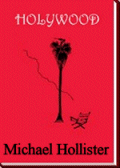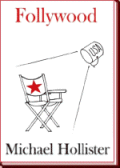Novelist & Critic
HOME PAGE
BIOGRAPHY
MODEL OF METAPHORS
DANEgerus
Patrick Garry, novelist
The Red Badge of Courage
By the time Ryan and Sarah were able to see Huston's new film downtown, they had been told what happened to it by the Wylers. John somehow managed to slip an art picture through the system at MGM where he was currently under contract, like Casanova taking a woman up to his room who had to be approved by the management, his version of Stephen Crane's classic The Red Badge of Courage, as faithful as John could be, realistic with no big stars. As head of production, Louie B. Mayer complained that it also had no women, no love story and to his mind no story at all. Mayer disliked Huston's realism and hated this project like death, but he let his rival Dore Schary produce it because he felt certain it would fail badly and reduce the influence of Schary with MGM executives in New York. Schary represented a new breed of movie executive for the fifties, just as sentimental as Mayer, both of them quick to tears, but a liberal, more responsive to the younger generation, more indulgent, a man as soft as Plotinus Plinlimmon who called everyone doll, baby and sweetie. Huston wanted to do a great film and felt this one was the best he ever made. He did not like a man who called him sweetie doing the final cut, but Schary had command.
Schary previewed the director's cut of the film for gossip columnist Hedda Hopper, who was so pleased to be chosen over her rival Louella Parsons that she overcame her animosity toward Huston and pronounced it the greatest war picture ever made. John showed it to Willy Wyler, who was thrilled by the tattered soldier's death scene, more realistic than anything in previous war movies. Willy called it the greatest picture he ever saw. The public preview took place at a comfortable modern theater in Beverly Hills, where an audience had come to enjoy Harvey, a gentle comedy about a large invisible bunny. They were not prepared to witness the most grotesque agonies of dying men ever enlarged on the big screen. During the show, people laughed at the wrong times, even at the death scenes, and over thirty got up and walked out, including several elderly ladies. Louie B. Mayer attended and hated the picture. The responses written on preview cards varied extremely and devastated Huston. The second preview, the following night at a theater in Pasadena, frustrated the anticipation of an audience consisting mainly of teenagers giggling in blue jeans and bobby socks, who came to see a romance starring Ginger Rogers. The responses were even worse than the night before. Some said their favorite character in the film was a pig. The next day, in disgust, Huston left for Africa.
Desperate executives revised his film, in particular by starting it with a cliché, a shot of the novel cover. The book opens and pages turn as narration explains that this is a classic, a great book that everybody should respect. Also, to reduce excessive grimness, the scene of Audie Murphy stumbling upon a corpse in the woods, confronting the reality of death, was cut. Nevertheless, the third preview audience was not impressed by a classic. Again many people laughed at the poignant moments, teenagers giggled and elderly patrons walked out. Schary tried to salvage the picture by removing what Huston considered the key scenes, including the death of the tattered soldier, then he released it with the statement that his final cut was a perfect translation of the book.
The critics agreed without demonstrating any familiarity with the novel, crediting Huston with virtually perfect fidelity to it. After the film opened in New York, reviews accorded it the highest praise, with a few exceptions, but it flopped at the box office and played mostly in small art theaters. Sarah was disappointed again. According to executive wisdom, when talk of art grows, audiences diminish. Mayer had warned them, it does not pay to be faithful to a book. Nevertheless, after all his years of leading MGM, the illustrious Mayer was soon replaced anyway as head of production by Schary, who posed as having made a noble experiment on this one occasion by sacrificing profits for art. Criticized for mangling a masterpiece, Schary disposed of the evidence by burning all the film of scenes he cut.
Driving home from the theater, Eisley wished they could have seen John's cut of his film. Stunned by what Schary had done, Sarah did not even want to talk about it at first. Eisley knew she felt that he would be even more reluctant now to risk doing another art film. She could hardly blame him. On the drive home, her silence felt like a confirmation that her own faith in adapting classics had been weakened, disdained by the ladies of Beverly Hills and mocked by bobbysoxers in Pasadena. When he mentioned that Dore Schary believed that background music in movies should always be trite, she finally spoke, pointing out that, except for the voiceover quotations from the book he added, Schary replaced irony with conventional sentiments, exactly the tone the book subverts, especially at the end.
The main character is an everyboy who runs from his first battle, yet he is played by a military star whose face represents the most exceptional courage, not the cowardice of the average man. As Huston knew, a movie screen tends to magnify a hero into a god--too big for irony to undercut--irony that Sarah did not believe that John even saw, perhaps because his own courage was indivisible. In the original story, eventually the boy becomes more than an average man, even a hero yes, but his estimate of himself is nevertheless undercut throughout the novel, which gives less importance to his physical courage than to his deficient moral courage, a theme that disappeared when Schary cut the death scene of the tattered soldier, whose abandonment by the young hero is implicitly worse than running from a battle.
Though a good screenwriter, Huston began as a painter and still used his notebook like a painter, making sketches instead of writing notes, reducing the complexity of stories to one governing idea he could represent with imagery. In this case he understood the main theme to be the conventional one of maturation, becoming a man. He had the eye of a painter, the willingness of the moviemaker to oversimplify and the primitive faith of most directors that everything essential to a story could be conveyed by pictures.
Ryan loved the film, "Spectacular shots!"
"I have to say," Sarah conceded. "Despite all he missed in the novel and the horrible things that Schary did to it, what remains is authentic and moving."
Follywood, pages 270-73
The Best Years of Our Lives
The Big Chill
Billy Budd
The Bostonians
Casablanca
Citizen Kane
Close Encounters of the Third Kind
Coming Home
Daisy Miller
The Day of the Locust
Dr. Strangelove
Easy Rider
Fail-Safe
A Farewell to Arms
The Front
Gone with the Wind
Good Night, and Good Luck
The Graduate
The Grapes of Wrath
The Great Gatsby
Guilty by Suspicion
High Noon
Huckleberry Finn
Invasion of the Body Snatchers
Key Largo
The Majestic
Meet John Doe
Moby-Dick
The Old Man and the Sea
On the Waterfront
The Player
The Red Badge of Courage
Reds
The Scarlet Letter
The Shrike, based on Miss Lonelyhearts
2001: A Space Odyssey
The Sun Also Rises
Triumph of the Will
The Way We Were
Wise Blood
The Wizard of Oz
Woodstock
The World According to Garp
The
HOLLYWOOD
Trilogy
Three historical novels dramatize Hollywood's global influence from the 1930s to the present age of terrorism, through the life stories of Sarah McCloud, a farm girl from Oregon, and Ryan Eisley, the son of a beer distributor from Ohio.



Click Book to Order